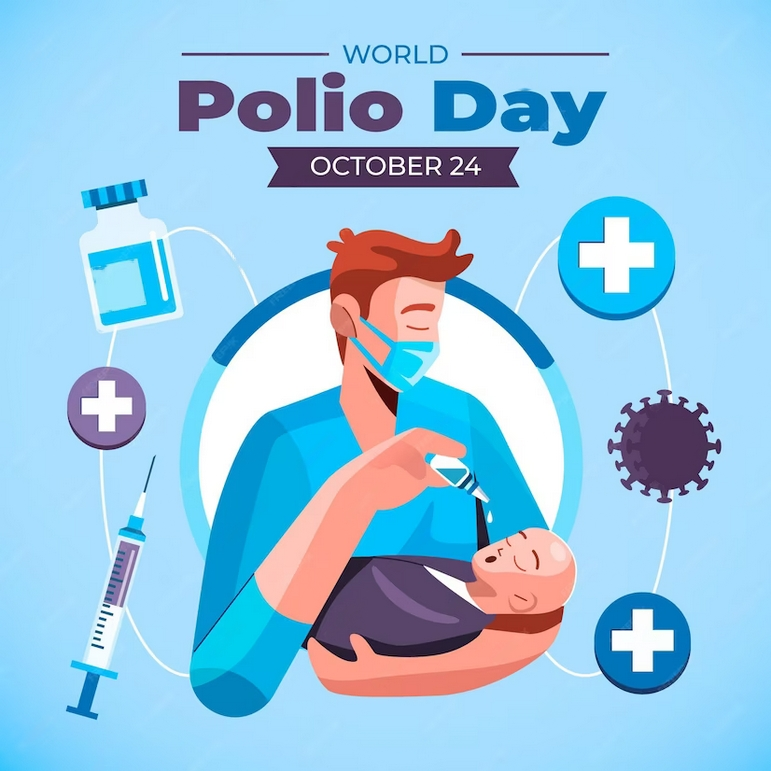
In the relentless pursuit of eradicating polio, Lal Hospital (Parvati Devi Hospital Unit-2) plays a pivotal role in championing polio vaccination programs. But how do polio vaccines work, and why are they so essential? In this blog post, we'll delve into the science behind polio vaccines to shed light on their mechanism and the critical role they play in public health.
Understanding Polio:
Polio, short for poliomyelitis, is a highly contagious viral disease caused by the poliovirus. It primarily affects the nervous system, potentially leading to paralysis, muscle weakness, and, in severe cases, death. Polio is transmitted through the fecal-oral route, making it particularly dangerous in areas with poor sanitation.
The Development of Polio Vaccines:
Polio vaccines have been a cornerstone in the fight against this debilitating disease. There are two primary types of polio vaccines:
Inactivated Polio Vaccine (IPV): IPV, also known as the Salk vaccine, is made from killed poliovirus. When administered, it stimulates the immune system to produce an immune response without causing the disease. IPV is usually given as a series of shots.
Oral Polio Vaccine (OPV): OPV, also known as the Sabin vaccine, contains live but weakened poliovirus. This vaccine is administered orally as drops. It not only protects the vaccinated individual but can also lead to herd immunity by preventing the spread of the virus in communities.
How Polio Vaccines Work:
Polio vaccines work by introducing a harmless part of the poliovirus or a weakened form to the immune system. This exposure prompts the immune system to produce antibodies against the virus. The next time the body encounters the actual poliovirus, the immune system can rapidly recognize and fight it, preventing the disease from taking hold.
Herd Immunity and Polio Eradication:
One of the critical aspects of polio vaccines is their contribution to herd immunity. When a sufficient percentage of a population is immunized against polio, it becomes challenging for the virus to spread, protecting even those who cannot be vaccinated, such as individuals with compromised immune systems. This is a key strategy in eradicating the disease globally.
Lal Hospital's Commitment to Polio Vaccination:
Lal Hospital (Parvati Devi Hospital Unit-2) plays an instrumental role in administering polio vaccines to the community. Through vaccination programs, outreach efforts, and education, the hospital is contributing to the global effort to eliminate polio once and for all.
In Conclusion:
Polio vaccines are a testament to the power of scientific research and community health efforts. They have brought us closer to a polio-free world. By understanding the science behind these vaccines, we can appreciate their significance and the critical role that institutions like Lal Hospital (Parvati Devi Hospital Unit-2) play in protecting public health.
Remember, every polio vaccine administered brings us one step closer to a polio-free world, and it's a journey that Lal Hospital is committed to continue.
Understanding Polio:
Polio, short for poliomyelitis, is a highly contagious viral disease caused by the poliovirus. It primarily affects the nervous system, potentially leading to paralysis, muscle weakness, and, in severe cases, death. Polio is transmitted through the fecal-oral route, making it particularly dangerous in areas with poor sanitation.
The Development of Polio Vaccines:
Polio vaccines have been a cornerstone in the fight against this debilitating disease. There are two primary types of polio vaccines:
Inactivated Polio Vaccine (IPV): IPV, also known as the Salk vaccine, is made from killed poliovirus. When administered, it stimulates the immune system to produce an immune response without causing the disease. IPV is usually given as a series of shots.
Oral Polio Vaccine (OPV): OPV, also known as the Sabin vaccine, contains live but weakened poliovirus. This vaccine is administered orally as drops. It not only protects the vaccinated individual but can also lead to herd immunity by preventing the spread of the virus in communities.
How Polio Vaccines Work:
Polio vaccines work by introducing a harmless part of the poliovirus or a weakened form to the immune system. This exposure prompts the immune system to produce antibodies against the virus. The next time the body encounters the actual poliovirus, the immune system can rapidly recognize and fight it, preventing the disease from taking hold.
Herd Immunity and Polio Eradication:
One of the critical aspects of polio vaccines is their contribution to herd immunity. When a sufficient percentage of a population is immunized against polio, it becomes challenging for the virus to spread, protecting even those who cannot be vaccinated, such as individuals with compromised immune systems. This is a key strategy in eradicating the disease globally.
Lal Hospital's Commitment to Polio Vaccination:
Lal Hospital (Parvati Devi Hospital Unit-2) plays an instrumental role in administering polio vaccines to the community. Through vaccination programs, outreach efforts, and education, the hospital is contributing to the global effort to eliminate polio once and for all.
In Conclusion:
Polio vaccines are a testament to the power of scientific research and community health efforts. They have brought us closer to a polio-free world. By understanding the science behind these vaccines, we can appreciate their significance and the critical role that institutions like Lal Hospital (Parvati Devi Hospital Unit-2) play in protecting public health.
Remember, every polio vaccine administered brings us one step closer to a polio-free world, and it's a journey that Lal Hospital is committed to continue.
